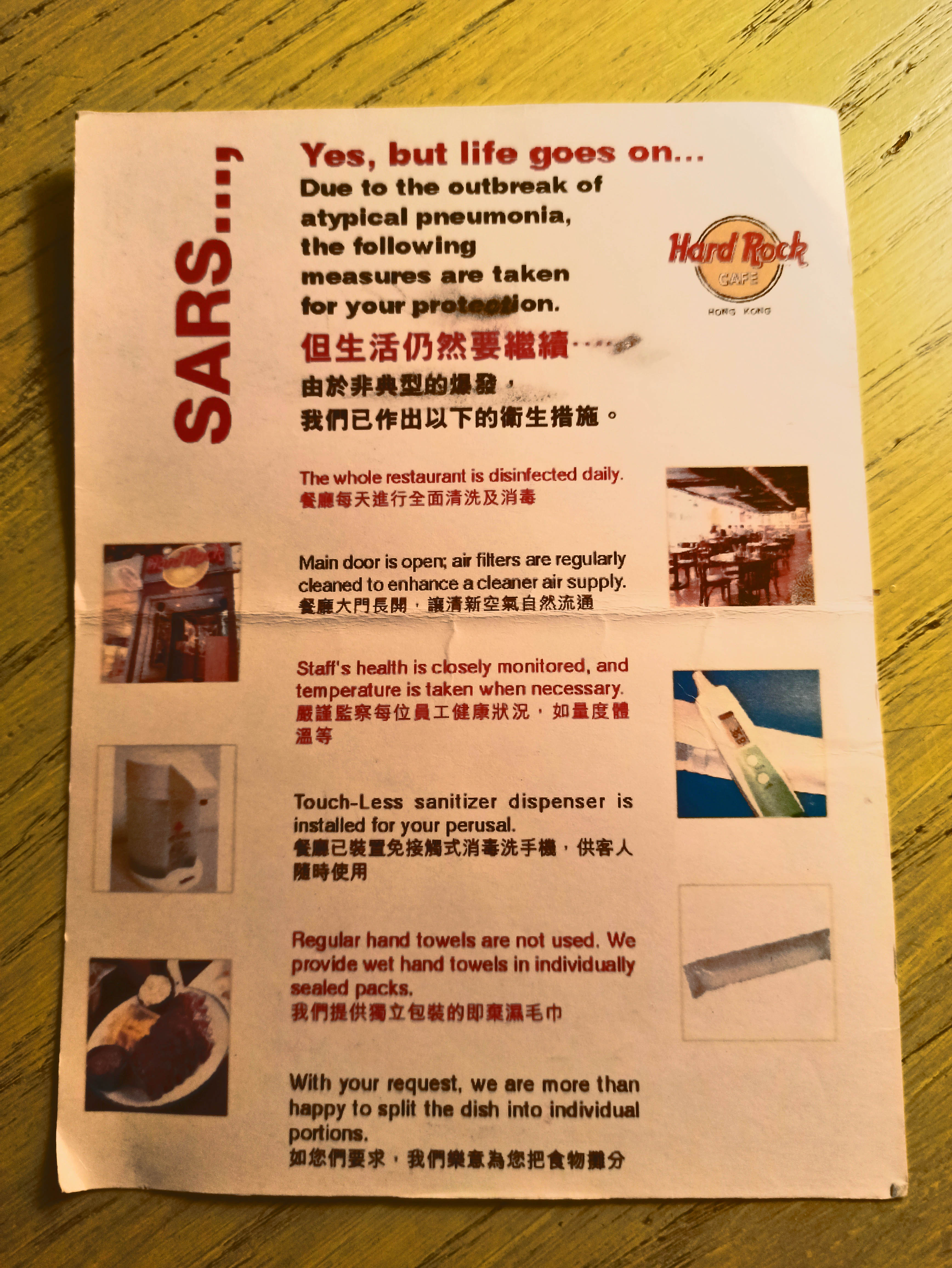The first time I visited Hong Kong, I was in awe of the countless apartment complexes juxtaposed on the subtropical hills, the myriad roads that could easily double as parts of any number of Chinatowns around the world, and a health form asking me if I had a fever, cough, or other common ailments.
Quite the welcome mat.
That’s right, the time was mid-2003, when the SARS-CoV-1 pandemic was still on every Hong Kong resident’s mind, even while case numbers were steadily decreasing.
Although SARS-CoV-1 did reach a number of countries, it was mostly focused on Toronto, Canada and China (where it originated), Hong Kong, and Taiwan. However, all I recall regarding plans to prevent its spread was a temperature check at Hong Kong’s airport, that flimsy health form, and some prescient leaflets at hotels and restaurants dotting the metropolis:

It helped that SARS-CoV-1 wasn’t nearly as contagious as COVID-19– at least one group concluded that it wasn’t an airborne virus — in spite of having higher fatality rates. Still, it’s interesting to have this relic from 20 years ago, and to reflect on how travel — even within one’s own housing, city or country — was affected that much more severely due to more recent circumstances.

Leave a Reply